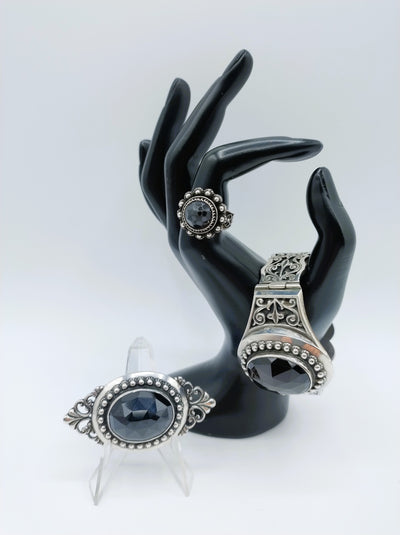There were already several Frisian silversmiths in the early Middle Ages. We know this from the many soil discoveries that have been made in Friesland. It is often impossible to determine who the maker is, because there is no documentation from that time, but due to the similarities in the design, we can cautiously say that it was made locally.
The first silver that has been handed down and documented consists of Catholic silver. After Friesland became Protestant, the churches melted down (almost) all the Catholic silver to create Protestant silver. Think of dinner plates, jugs, etc.
The oldest known Catholic object is a host box from the 15th century and was accidentally discovered in the church wall of Jorwert during restoration work. (see below)

From about the 16th century, hallmarks can be traced back to silversmiths. At that time (a little later actually) the first guilds were founded and manuals for silversmiths were published. A prospective member also had to take the guild test of competence. The marks of the masters associated with the guild of that city were recorded in copper plates. Large cities such as Leeuwarden had their own guild. From earlier times, spoons from the guild are still known, which were given to members at the end of the year, paid for with the money left over from the treasury.

From the 16th century onwards, silver was on the rise, because more and more people wanted to have silver utensils. In addition to utensils, such as spoons, knives, knotted boxes, brandy bowls, cream bowls, Bibles, etc., silver for traditional costumes also became increasingly fashionable. The ladies' earrings became wider and wider in Friesland, until they covered the entire head like a kind of helmet and let's not forget all the buttons, trouser buttons, chains and bracelets.
Due to the increased prosperity, farmers and citizens were left hanging. 'There was once a time when all women in Friesland wore a gold or silver helmet on their heads. Travelers were amazed that even the maids of the hotel where they were staying walked around with a silver or gold helmet on their head.' Friesland was a relatively wealthy province in the seventeenth and eighteenth centuries.
The silversmiths also moved with the trends of the time. The rise of smoking, for example, suddenly created a demand for pipe stoppers, pipe stoves, tobacco boxes, etc. The arrival of coffee and tea also provided a new impetus so that more and more people wanted teapots and coffee pots.
It is striking for the Frisian silversmiths, they more or less retained their own style (curly motifs and other busy patterns) and were less fashion sensitive than the silversmiths in Schoonhoven, for example.







